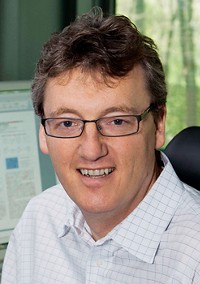Advertisement
Grab your lab coat. Let's get started
Welcome!
Welcome!
Create an account below to get 6 C&EN articles per month, receive newsletters and more - all free.
It seems this is your first time logging in online. Please enter the following information to continue.
As an ACS member you automatically get access to this site. All we need is few more details to create your reading experience.
Not you? Sign in with a different account.
Not you? Sign in with a different account.
ERROR 1
ERROR 1
ERROR 2
ERROR 2
ERROR 2
ERROR 2
ERROR 2
Password and Confirm password must match.
If you have an ACS member number, please enter it here so we can link this account to your membership. (optional)
ERROR 2
ACS values your privacy. By submitting your information, you are gaining access to C&EN and subscribing to our weekly newsletter. We use the information you provide to make your reading experience better, and we will never sell your data to third party members.
Materials
Kenneth J. Shea
February 12, 2007
| A version of this story appeared in
Volume 85, Issue 7
When C&EN caught up with Kenneth J. Shea, he was preparing to embark on a deep-sea diving trip to a remote region of Australia's Coral Sea. An avid diver for more than 15 years, Shea has racked up an impressive collection of far-flung adventures. Of course, it makes sense that Shea would choose to spend his leisure time on such exotic excursions, for the same adventuresome spirit has distinguished his academic career.
Sidestepping the more densely populated areas of organic chemistry research, Shea has been investigating the field's elusive boundaries in materials and polymer science. "Shea is a remarkably creative scientist who has made seminal contributions to organic chemistry in areas ranging from synthetic organic chemistry to materials science," says Larry E. Overman, who works with Shea at the University of California, Irvine. "Few organic chemists have recorded as many influential 'firsts' as Shea, let alone in as many diverse areas: first type 2 Diels-Alder reaction, first aryl-bridged polysilsesquioxanes hybrid materials, first living polymerization of ylides."
A self-described mediocre student, Shea's chemical curiosity was first sparked in high school. "Chemistry was probably the first course I did well in," he recalls. "It just came effortlessly to me." The native New Yorker decided to venture into the wilds of Ohio to do his undergraduate studies at the University of Toledo. He then earned a Ph.D. in Philip K. Skell's lab at Pennsylvania State University. Shea headed west to do his postdoctoral research with Robert G. Bergman at California Institute of Technology before joining the faculty at UC Irvine, where he has been teaching chemistry for more than 30 years.
One of Shea's first projects as a principal investigator involved molecular imprinting, a technique for creating structurally defined binding and catalytic sites in synthetic network polymers. The project called for his group to make insoluble, cross-linked polymers-materials he'd never worked with before. "Though I had no background or experience, I had to bite the bullet and learn how to use the instruments and techniques for characterizing" these materials, he remembers.
"It was sort of an interesting challenge to broaden the scope of organic chemistry," Shea says, although he admits that for some chemists, diving into such unfamiliar territory presents a barrier. Overcoming that barrier gave Shea confidence to use his organic synthesis know-how to tackle other envelope-pushing projects.
"What we bring to the table is the ability to think about a material's design and go to the lab and synthesize those materials. Organic chemists are the only people who can do that," Shea says. "I preach to my graduate students that if you can do demanding nontrivial synthesis, then you can play in any arena you want."
And Shea's diverse list of more than 200 publications demonstrates that that's true. "His career has been distinguished by the large number of novel ideas he has devised and executed in an unusually wide range of research areas," notes Bergman, now at UC Berkeley. "I have been consistently impressed by how broadly based and creative Shea's work has been. Many of his papers reflect the execution of clever ideas that I wish I had thought of myself."






Join the conversation
Contact the reporter
Submit a Letter to the Editor for publication
Engage with us on Twitter